The History of a Mouthful of Bread, Jean Macé [best autobiographies to read TXT] 📗
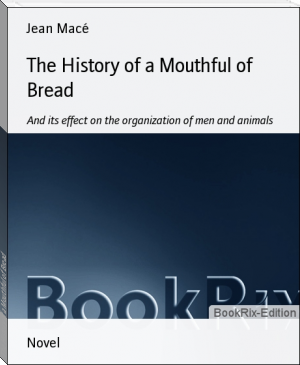
- Author: Jean Macé
Book online «The History of a Mouthful of Bread, Jean Macé [best autobiographies to read TXT] 📗». Author Jean Macé
/>
Marsupium is Latin for purse, pouch, or pocket. The marsupials are distinguished from other animals by a pouch which the mother has under her belly, and in which the little ones take refuge at the slightest alarm. You would be very much interested with their whole story; but it has nothing to do with our present subject, which we should soon lose sight of if we once began to wander away. This order, so easily distinguished otherwise by that singular pouch, unfortunately for us, offers nothing new for observation. It includes several species, differing entirely from one another on the subject of nutrition, and closely resembling some already described. Some are both carnivorous and insectivorous, and are therefore armed with powerful canines, and with molars like those of the hedgehog. Others are herbivorous, like hares, and have almost the jaws of a rodent. Among the former we have the opossum, celebrated by Florian in one of his prettiest fables. The opossum inhabits South America. Charming little marsupials are to be found in the Molucca Isles, whence come the nutmeg and the clove; these are very like our squirrels, and live as they do, in trees, hunting after fruit and insects. But the greatest number of marsupials belong to Australia, the real native land of the order. They form by far the larger portion of the mammalia with which that country is enriched; the most celebrated amongst them being the kangaroo; an animal which is now becoming common in European menageries, and which, excepting in the matter of its pouch, is nothing but a magnified rabbit, as tall as a man, and with a tail almost as long as itself. As a rabbit, you know what its eating apparatus must be; and some day, no doubt, the French Acclimatisation Society will enable us to judge of its flavor. It is a kind of meat very likely to be seen on our dinner-tables by-and-by; and, as you have plenty of time before you, probably you may eat of it before you die.
ORDER 10. Edentata (toothless) .
These come more directly within our limits. They are classed according to their teeth; yet if their name were to be trusted, they ought to have no teeth at all. Whereas, alas! almost all of them have some, and I am heartily ashamed of their scientific designation; but how can we help it? The only really Edentata, i. e . toothless animals, amongst them are the ant-eaters, who, considering the nature of their food, are not much in want of teeth. They feed among the ant-hills, whence they get their name; and as they are a tolerable size (from two to three feet in length), it would really have been quite a hardship upon them to have been forced to crunch the ants one by one at every meal. To get on rapidly they catch them with their tongue; but what a tongue! Imagine a kind of long earthworm, lodged in a snout which is elongated like a bird's beak, and has a very small opening at the extremity. The ant eater inserts this long, string-like tongue into the crowded ranks of its victims, and, as its surface is glutinous, they stick to it by hundreds at a time, and are swallowed at one gulp without a chance of escape. This tongue, perfectly unique in its character, stretches out in its murderous exertions to nearly three times the length of the animal's long head. What a distance there seems between such a tongue as this and your own little doorkeeper! But no wonder: we have now reached the confines of the kingdom of Mammalia, and the face of nature is beginning to change.
The Armadillo, for instance, which comes next to the ant-eater, looks far more like the tortoise or lizard than its noble mammalian brethren. It is covered with scales; and, to look at it, you would say it was a reptile, in spite of its higher internal organization. As for teeth, it has certainly enough of them to give the lie to its name of
edentata; but they are not very serviceable ones. They are called molars, however, because they are situated in that part of the mouth which is always assigned to molars; but they are miserable grindstones, very unlike any of which we have hitherto treated. They are all of them flattened cylinders, with no enamel bars to strengthen them; are small and poor, and are placed at rather wide intervals from one another. The poor armadillo munches with these, as best he can, slugs, tender roots, and other prey of the same sort, with which he is obliged to content himself, and which do not require very formidable tools.
The most questionable member of this class is the Unau, or Two-toed Sloth. It only wants incisors to be as toothless as ourselves! and the first time I saw it I took it for a little bear. It is true I was then younger than you are now; for the bear, who is one of our nearest neighbors, ought not to have been confounded with the unhappy being before us, one of the drudges of the animal creation; though M. de Blainville (who had not my excuse) proposed placing it still nearer to us, namely, amongst the Quadrumana . Observe that instead of hands it has at the end of its fore-limbs only two enormously curved claws, which have somewhat the appearance of a gigantic fork accidentally twisted. Accordingly its illustrious sponsor offered it to the world as an irregular quadrumane . I believe so, indeed! This quadrumane without hands-this edentate whose molars are preceded by magnificent canines-this enigma of nature, created for the confusion and despair of all classification-does, I must in all humility confess, completely upset the rule I laid down so stringently when speaking of the horse, as to the objects for which canine teeth were framed. The canine teeth of the sloth are more developed than its molars, and yet I cannot tell you what they are there for at all. It feeds upon the leaves of trees; and old travellers in South America, where it inhabits, have told us that, when it has once hoisted itself up a tree, it will strip it to its last leaf, and afterwards drop to the ground to avoid the trouble of crawling down. This was what first obtained for it the villanous name of sloth, a title which is certainly justified by its gait when on the ground; for it is so ill-made that it cannot stand upright on its legs, but moves clumsily forward by dragging itself on its elbows. It seems, however, that when once in a tree it is a different creature altogether, and can scramble lightly from branch to branch. Moreover, if its claws cannot reasonably be reckoned as hands, they are at all events excellent hooks; and when it is springing about thus in the forest, suspended to the branches by its long arms, one might be tempted, while watching it from below, to decide in favor of M. de Blainville's opinion. I saw it originally myself in a cage.
As to the sloth's relationship to the armadillo, this rests upon a detail which bears directly upon our subject. The molars in both animals are cylindrical and smooth, this is a trifle, but what would you have? The animal had to be classed somehow; since naturalists have not had the wit to make detached companies, as they do in regiments of soldiers. ORDER 11. Amphibia (two-lived) .
We are going farther and farther away. Here are animals who are nearly half fishes ( amphis , double , and bios , life ). The Amphibia have two lives: one in the water, which is their true life, and where they are in their element; the other upon land, where they can only crawl; for their paws, which are but half developed, are destined to perform the office of fins, and the hinder ones are extended flatly behind them, and act like a fish's tail. They are divided into two families, the seal and the walrus. The first feed on fish, and have the same internal organization as the Carnivora , as well as the same dental conformation. Some species have even exactly thirty-two teeth, as we have. The jaw of the walrus is the least regular, and the incisors are generally wanting, especially in the full-grown animal; for it appears they lose them very young, as you lost your milk teeth, only, unluckily for the walrus, his never grow again. On the other hand, he has two canines in his upper jaw, which, next to the elephant's tusks, are the largest we have yet met with. They are sometimes as much as two feet long, and incline downwards with a curve, like the two bars of a pick- axe. They would play the walrus the same trick that the incisors of rodents are apt to do when they have not work enough to wear them down; that is, stop up the entrance of its mouth, were it not that the lower jaw is contracted in front, in order to fit into the space between the two canines, which thus form a sort of passage in which it manoeuvres freely. As you may suppose, the walrus cannot insert prey of any great size into this contracted passage; but that is no matter, as he lives partly on seaweeds, and partly-indeed principally-on shell-fish; his molars being specially adapted for breaking shells. They are short massive cylinders-the upper ones fitting into the lower as a pestle into a mortar.
After the walrus comes a strange animal which has been ranked among Cetaceans (we shall see why presently), but which it would be better not to separate from the Amphibians, since an Amphibian order has been made, for it crawls from time to time upon land: this is the Manatee, or Sea-cow. It comes still nearer a fish than the others. Its forelimbs are absolute fins, with mere vestiges of nails at their edges; it has no hind ones, and its body, which is quite cylindrical, ends in a fin tail in the shape of a shovel. The sea-cow feeds on plants and herbage, and lives at the mouths of great rivers, going up them occasionally to great distances, their banks serving it for pasture ground. In some respects it is half brother to the hippopotamus and the great grass eating Pachydermata , to whom it comes so near in internal organization, and above all in the structure of its molars, that M. de Blainville seriously proposed ranking it among the elephants, though as an irregular elephant , as you may suppose. But then Cuvier had even placed the seal among the Carnivora , by the side of the cat, whose whiskers it possessed, and of the dog, whom it resembled in the formation of its head. A naturalist's office is sometimes very perplexing, I assure you; and as we are touching on this subject, I cannot resist telling you that the sea-cow laid claim to, on so many sides, had by right a free admission to the celebrated order of
Primates , although it looks exactly like a large barrel elongated at the two ends. It suckles its young at the breast like man and the monkey; and if Linnæus flinched from this rather too absurd parentage, old navigators were less scrupulous. Observing this creature in the distance, sporting on the waves, the upper part of its body quite out of the sea, the sailors, whose eye is not of the most refined, and who have no objections generally to the marvellous, imagined they saw a new species of human beings; and hence arose those stories of
Marsupium is Latin for purse, pouch, or pocket. The marsupials are distinguished from other animals by a pouch which the mother has under her belly, and in which the little ones take refuge at the slightest alarm. You would be very much interested with their whole story; but it has nothing to do with our present subject, which we should soon lose sight of if we once began to wander away. This order, so easily distinguished otherwise by that singular pouch, unfortunately for us, offers nothing new for observation. It includes several species, differing entirely from one another on the subject of nutrition, and closely resembling some already described. Some are both carnivorous and insectivorous, and are therefore armed with powerful canines, and with molars like those of the hedgehog. Others are herbivorous, like hares, and have almost the jaws of a rodent. Among the former we have the opossum, celebrated by Florian in one of his prettiest fables. The opossum inhabits South America. Charming little marsupials are to be found in the Molucca Isles, whence come the nutmeg and the clove; these are very like our squirrels, and live as they do, in trees, hunting after fruit and insects. But the greatest number of marsupials belong to Australia, the real native land of the order. They form by far the larger portion of the mammalia with which that country is enriched; the most celebrated amongst them being the kangaroo; an animal which is now becoming common in European menageries, and which, excepting in the matter of its pouch, is nothing but a magnified rabbit, as tall as a man, and with a tail almost as long as itself. As a rabbit, you know what its eating apparatus must be; and some day, no doubt, the French Acclimatisation Society will enable us to judge of its flavor. It is a kind of meat very likely to be seen on our dinner-tables by-and-by; and, as you have plenty of time before you, probably you may eat of it before you die.
ORDER 10. Edentata (toothless) .
These come more directly within our limits. They are classed according to their teeth; yet if their name were to be trusted, they ought to have no teeth at all. Whereas, alas! almost all of them have some, and I am heartily ashamed of their scientific designation; but how can we help it? The only really Edentata, i. e . toothless animals, amongst them are the ant-eaters, who, considering the nature of their food, are not much in want of teeth. They feed among the ant-hills, whence they get their name; and as they are a tolerable size (from two to three feet in length), it would really have been quite a hardship upon them to have been forced to crunch the ants one by one at every meal. To get on rapidly they catch them with their tongue; but what a tongue! Imagine a kind of long earthworm, lodged in a snout which is elongated like a bird's beak, and has a very small opening at the extremity. The ant eater inserts this long, string-like tongue into the crowded ranks of its victims, and, as its surface is glutinous, they stick to it by hundreds at a time, and are swallowed at one gulp without a chance of escape. This tongue, perfectly unique in its character, stretches out in its murderous exertions to nearly three times the length of the animal's long head. What a distance there seems between such a tongue as this and your own little doorkeeper! But no wonder: we have now reached the confines of the kingdom of Mammalia, and the face of nature is beginning to change.
The Armadillo, for instance, which comes next to the ant-eater, looks far more like the tortoise or lizard than its noble mammalian brethren. It is covered with scales; and, to look at it, you would say it was a reptile, in spite of its higher internal organization. As for teeth, it has certainly enough of them to give the lie to its name of
edentata; but they are not very serviceable ones. They are called molars, however, because they are situated in that part of the mouth which is always assigned to molars; but they are miserable grindstones, very unlike any of which we have hitherto treated. They are all of them flattened cylinders, with no enamel bars to strengthen them; are small and poor, and are placed at rather wide intervals from one another. The poor armadillo munches with these, as best he can, slugs, tender roots, and other prey of the same sort, with which he is obliged to content himself, and which do not require very formidable tools.
The most questionable member of this class is the Unau, or Two-toed Sloth. It only wants incisors to be as toothless as ourselves! and the first time I saw it I took it for a little bear. It is true I was then younger than you are now; for the bear, who is one of our nearest neighbors, ought not to have been confounded with the unhappy being before us, one of the drudges of the animal creation; though M. de Blainville (who had not my excuse) proposed placing it still nearer to us, namely, amongst the Quadrumana . Observe that instead of hands it has at the end of its fore-limbs only two enormously curved claws, which have somewhat the appearance of a gigantic fork accidentally twisted. Accordingly its illustrious sponsor offered it to the world as an irregular quadrumane . I believe so, indeed! This quadrumane without hands-this edentate whose molars are preceded by magnificent canines-this enigma of nature, created for the confusion and despair of all classification-does, I must in all humility confess, completely upset the rule I laid down so stringently when speaking of the horse, as to the objects for which canine teeth were framed. The canine teeth of the sloth are more developed than its molars, and yet I cannot tell you what they are there for at all. It feeds upon the leaves of trees; and old travellers in South America, where it inhabits, have told us that, when it has once hoisted itself up a tree, it will strip it to its last leaf, and afterwards drop to the ground to avoid the trouble of crawling down. This was what first obtained for it the villanous name of sloth, a title which is certainly justified by its gait when on the ground; for it is so ill-made that it cannot stand upright on its legs, but moves clumsily forward by dragging itself on its elbows. It seems, however, that when once in a tree it is a different creature altogether, and can scramble lightly from branch to branch. Moreover, if its claws cannot reasonably be reckoned as hands, they are at all events excellent hooks; and when it is springing about thus in the forest, suspended to the branches by its long arms, one might be tempted, while watching it from below, to decide in favor of M. de Blainville's opinion. I saw it originally myself in a cage.
As to the sloth's relationship to the armadillo, this rests upon a detail which bears directly upon our subject. The molars in both animals are cylindrical and smooth, this is a trifle, but what would you have? The animal had to be classed somehow; since naturalists have not had the wit to make detached companies, as they do in regiments of soldiers. ORDER 11. Amphibia (two-lived) .
We are going farther and farther away. Here are animals who are nearly half fishes ( amphis , double , and bios , life ). The Amphibia have two lives: one in the water, which is their true life, and where they are in their element; the other upon land, where they can only crawl; for their paws, which are but half developed, are destined to perform the office of fins, and the hinder ones are extended flatly behind them, and act like a fish's tail. They are divided into two families, the seal and the walrus. The first feed on fish, and have the same internal organization as the Carnivora , as well as the same dental conformation. Some species have even exactly thirty-two teeth, as we have. The jaw of the walrus is the least regular, and the incisors are generally wanting, especially in the full-grown animal; for it appears they lose them very young, as you lost your milk teeth, only, unluckily for the walrus, his never grow again. On the other hand, he has two canines in his upper jaw, which, next to the elephant's tusks, are the largest we have yet met with. They are sometimes as much as two feet long, and incline downwards with a curve, like the two bars of a pick- axe. They would play the walrus the same trick that the incisors of rodents are apt to do when they have not work enough to wear them down; that is, stop up the entrance of its mouth, were it not that the lower jaw is contracted in front, in order to fit into the space between the two canines, which thus form a sort of passage in which it manoeuvres freely. As you may suppose, the walrus cannot insert prey of any great size into this contracted passage; but that is no matter, as he lives partly on seaweeds, and partly-indeed principally-on shell-fish; his molars being specially adapted for breaking shells. They are short massive cylinders-the upper ones fitting into the lower as a pestle into a mortar.
After the walrus comes a strange animal which has been ranked among Cetaceans (we shall see why presently), but which it would be better not to separate from the Amphibians, since an Amphibian order has been made, for it crawls from time to time upon land: this is the Manatee, or Sea-cow. It comes still nearer a fish than the others. Its forelimbs are absolute fins, with mere vestiges of nails at their edges; it has no hind ones, and its body, which is quite cylindrical, ends in a fin tail in the shape of a shovel. The sea-cow feeds on plants and herbage, and lives at the mouths of great rivers, going up them occasionally to great distances, their banks serving it for pasture ground. In some respects it is half brother to the hippopotamus and the great grass eating Pachydermata , to whom it comes so near in internal organization, and above all in the structure of its molars, that M. de Blainville seriously proposed ranking it among the elephants, though as an irregular elephant , as you may suppose. But then Cuvier had even placed the seal among the Carnivora , by the side of the cat, whose whiskers it possessed, and of the dog, whom it resembled in the formation of its head. A naturalist's office is sometimes very perplexing, I assure you; and as we are touching on this subject, I cannot resist telling you that the sea-cow laid claim to, on so many sides, had by right a free admission to the celebrated order of
Primates , although it looks exactly like a large barrel elongated at the two ends. It suckles its young at the breast like man and the monkey; and if Linnæus flinched from this rather too absurd parentage, old navigators were less scrupulous. Observing this creature in the distance, sporting on the waves, the upper part of its body quite out of the sea, the sailors, whose eye is not of the most refined, and who have no objections generally to the marvellous, imagined they saw a new species of human beings; and hence arose those stories of
Free e-book «The History of a Mouthful of Bread, Jean Macé [best autobiographies to read TXT] 📗» - read online now
Similar e-books:
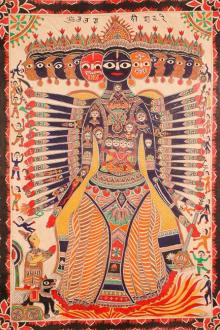
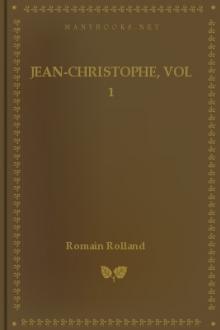
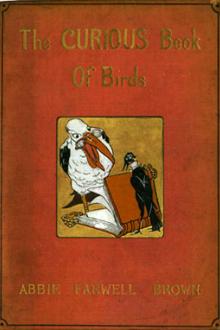

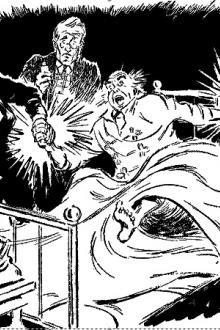
Comments (0)